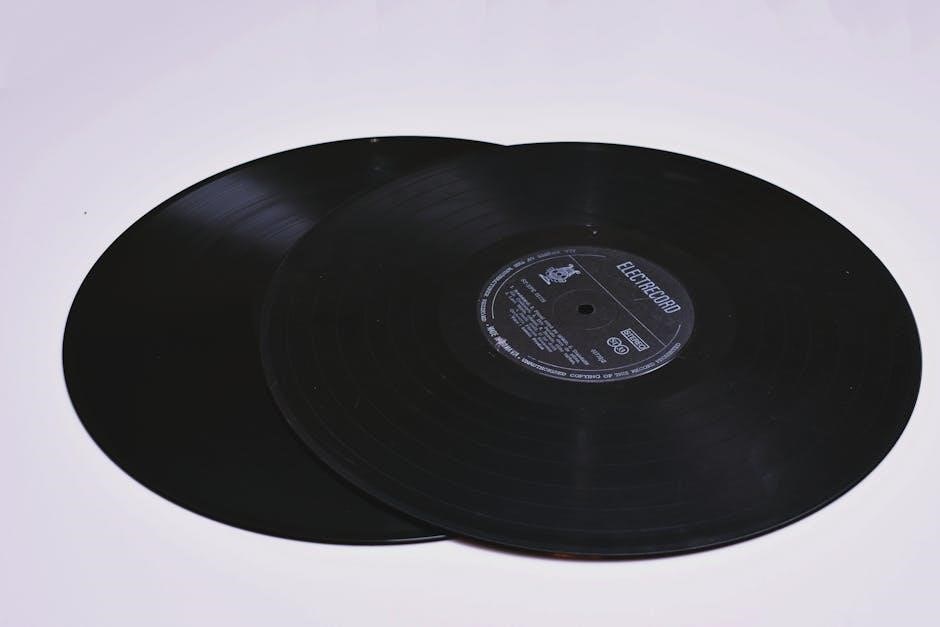Article Plan: Musical Terms A-Z PDF
This article outlines a comprehensive A-Z PDF guide to musical terminology, spanning dynamics, tempo, style, form, harmony, melody, rhythm, texture, and instrumentation. It will also offer resources for further learning, creating a valuable tool for musicians and students alike.
Embarking on a musical journey requires understanding the language that shapes its creation and interpretation. Musical terminology provides a standardized system for musicians to communicate effectively about various aspects of music, ranging from the loudness of a note to the structure of an entire composition. This “Musical Terms A-Z PDF” aims to serve as an accessible guide for navigating this rich vocabulary.
From fundamental concepts like “a cappella,” indicating choral music without instrumental accompaniment, to complex ideas such as “polyphony,” describing multiple independent melodic lines, each term plays a crucial role. This glossary extends beyond simple definitions, offering insights into how these terms are applied in practice. Grasping these terms unlocks deeper appreciation and understanding of music, empowering individuals to analyze, perform, and create with greater precision and artistry.
Whether you’re a student beginning your musical education, a seasoned performer seeking to refine your understanding, or simply a music enthusiast eager to delve deeper, this resource offers a valuable foundation. It bridges the gap between listening and comprehension, enriching your experience with the art of sound.
Importance of Understanding Musical Terms
Comprehending musical terminology is paramount for anyone involved in the world of music, whether as a performer, composer, listener, or educator. These terms act as a universal language, facilitating clear and concise communication among musicians. Imagine an orchestra conductor instructing the musicians without using terms like “staccato” or “crescendo” – the rehearsal would quickly devolve into chaos.
For performers, understanding musical terms translates to accurate interpretation of musical scores. Knowing the meaning of “allegro” versus “adagio” dictates the tempo and overall feel of a piece. Similarly, grasping dynamic markings like “piano” and “forte” ensures the intended emotional impact is conveyed. Composers rely on these terms to precisely express their artistic vision, guiding performers to bring their compositions to life.
Even for casual listeners, familiarity with musical terms enhances their appreciation of music. Recognizing terms like “ostinato” or “sonata form” allows listeners to identify patterns and structures within a piece, leading to a more profound understanding of the composer’s intent. In essence, mastering musical terminology unlocks a deeper level of engagement with the art form, fostering a richer and more rewarding musical experience for all.
A-Z Glossary: Overview of Contents
This A-Z glossary is designed to be a comprehensive resource for navigating the vast landscape of musical terminology. It encompasses a wide range of terms, from the fundamental building blocks of music to more advanced concepts, providing clear definitions and explanations for each entry. The glossary covers essential areas such as dynamics, exploring terms like “pianissimo,” “mezzo forte,” and “fortissimo” to describe variations in volume.
Tempo markings are thoroughly addressed, elucidating terms like “allegro,” “andante,” and “presto” to indicate the speed of the music. Furthermore, the glossary delves into terms related to musical style, such as “legato,” “staccato,” and “marcato,” which define the articulation and character of the notes. Concepts of musical form, including “sonata form,” “rondo form,” and “theme and variations,” are explained to aid in understanding the structure of compositions.
Harmonic terms, such as “chord,” “cadence,” and “inversion,” are included to clarify the relationships between notes and chords. Melodic terms, like “motif,” “phrase,” and “scale,” are defined to describe the elements of musical lines. Rhythmic terms, such as “meter,” “beat,” and “syncopation,” are outlined to clarify the organization of time in music. The glossary also explores terms related to texture, such as “monophonic,” “homophonic,” and “polyphonic,” to describe the layers of sound in a composition. Finally, terms related to instrumentation and vocal techniques are included, making this glossary a holistic guide to musical language.

Dynamics: Terms Related to Volume

Dynamics in music refer to the loudness or softness of a sound or note. This section of the A-Z glossary provides a comprehensive overview of dynamic markings, crucial for interpreting and performing music accurately. At the quietest end of the spectrum, we find pianississimo (ppp), indicating “as soft as possible,” often barely audible. Next is pianissimo (pp), meaning “very soft.” Moving slightly louder, piano (p) signifies “soft.”
The term mezzo piano (mp) represents “moderately soft,” a step above piano. The middle ground is marked by mezzo forte (mf), meaning “moderately loud.” As the volume increases, we encounter forte (f), indicating “loud.” Further up the scale is fortissimo (ff), meaning “very loud.” The loudest dynamic marking is fortississimo (fff), signifying “as loud as possible.”
Beyond these standard markings, composers often use additional “p” or “f” to indicate even more extreme dynamics. Terms like crescendo (gradually getting louder) and decrescendo or diminuendo (gradually getting softer) are also essential. These dynamic markings are vital tools for musicians to convey the emotional and expressive content of a piece.
Tempo: Terms Related to Speed
Tempo, in music, is the speed or pace at which a piece is played. Understanding tempo markings is crucial for accurately interpreting a composer’s intentions. This section of the A-Z glossary delves into various tempo terms, providing a clear understanding of their meanings.
At the slower end of the spectrum, we find terms like largo, meaning “very slow and broad,” and adagio, indicating “slow and stately.” Slightly faster is andante, which translates to “walking pace,” suggesting a moderate and graceful tempo. Moderato represents a moderate tempo, striking a balance between fast and slow.
As we move towards faster tempos, we encounter allegro, meaning “fast and lively,” and vivace, indicating “very fast and brisk.” The fastest tempo marking is presto, signifying “extremely fast.” Composers may also use terms like ritardando (gradually slowing down) and accelerando (gradually speeding up) to indicate changes in tempo throughout a piece. Metronome markings, expressed in beats per minute (BPM), provide a precise indication of tempo. Understanding these terms allows musicians to perform music at the intended speed, contributing to an accurate and expressive rendition.
Style: Terms Describing Musical Character
Musical style encompasses the distinct characteristics that define a particular era, genre, or composer’s work. Style terms help us articulate the nuances of a piece and understand its historical and cultural context. This section of the A-Z glossary explores a range of terms used to describe musical character.
Terms like “Baroque” denote a specific period (roughly 1600-1750) characterized by ornate melodies, complex counterpoint, and a sense of grandeur. “Classical” refers to the era (approximately 1750-1820) emphasizing clarity, balance, and formal structure. “Romantic” describes music from the 19th century, marked by emotional intensity, expressive melodies, and programmatic elements. “Impressionistic” evokes a sense of atmosphere and fleeting impressions, often using unconventional harmonies and textures.
Other style terms include “modal,” referring to music based on modes rather than major or minor scales; “atonal,” indicating music that lacks a tonal center; and “serial,” describing music organized using a predetermined series of pitches. Genre-specific terms like “blues,” “jazz,” “folk,” and “rock” also fall under the umbrella of style. Understanding these terms enriches our appreciation of music by providing a framework for analyzing and discussing its unique qualities.
Form: Terms Related to Musical Structure (e.g., ABA Form)
Musical form refers to the overall structure or plan of a piece of music. Understanding form allows us to analyze how a composition is organized, how its different sections relate to each other, and how it creates a sense of unity and coherence. This section of the A-Z glossary focuses on terms that describe various musical forms.
One of the most basic forms is “binary form” (AB), which consists of two distinct sections. “Ternary form” (ABA), also known as “ABA Form,” features a contrasting middle section (B) followed by a return to the opening section (A). “Rondo form” (ABACA) involves a recurring main theme (A) interspersed with contrasting sections (B, C, etc.). “Sonata form” is a more complex structure commonly used in classical music, typically consisting of an exposition, development, and recapitulation.
Other form-related terms include “theme and variations,” where a melody is presented and then altered in various ways; “fugue,” a contrapuntal composition based on a single theme; and “strophic form,” where the same music is repeated for each verse of a song. By learning these terms, musicians can better understand the architecture of musical works and appreciate the composer’s craft in shaping the musical material.

Harmony: Terms Describing Chords and Progressions

Harmony, in music, is the art of combining simultaneously sounding musical notes to produce chords and chord progressions. This section of the A-Z glossary dives into the terminology used to describe these harmonic elements, crucial for understanding how music creates tension, release, and emotional impact.
Key terms include “chord,” a combination of three or more notes sounded together; “triad,” a three-note chord consisting of a root, third, and fifth; and “inversion,” a variation of a chord where the bass note is not the root. “Progression” refers to a sequence of chords, and common progressions like the “ii-V-I” are discussed.
The section also covers “consonance” and “dissonance,” describing chords that sound stable and pleasing versus those that create tension. “Cadence” refers to a harmonic progression that provides a sense of closure. Furthermore, the glossary will explore “modulation,” the process of changing from one key to another, and “counterpoint,” a style of writing in which two or more independent melodic lines are combined harmonically.
Understanding these harmonic terms allows musicians to analyze and appreciate the rich tapestry of sounds created by chords and their relationships within a musical composition, including identifying basic concepts as music, theory and music theory.
Melody: Terms Describing Musical Lines
Melody, the soul of a musical piece, is a sequence of single notes that create a recognizable and memorable musical line. This section of the A-Z glossary will focus on terms that describe and define the characteristics of melodies, providing a deeper understanding of how they function and evoke emotion.
Key terms include “pitch,” the highness or lowness of a note; “interval,” the distance between two pitches; “scale,” a collection of pitches arranged in a specific order; and “motif,” a short, recurring melodic fragment. The section also covers “contour,” the overall shape of a melody as it rises and falls, and “phrase,” a complete musical thought, similar to a sentence in language.
Furthermore, the glossary explores “conjunct” and “disjunct” motion, describing melodies that move by small steps versus large leaps. “Ornamentation,” the embellishment of a melody with added notes, will also be defined. Terms such as “theme,” a central melodic idea, and “leitmotif,” a recurring theme associated with a particular character or idea, will be explained.
Understanding melodic terms enables musicians to analyze and appreciate the expressive power of musical lines, including insights into music composition and inspiration for beginning students of music composition and appreciate the expressive power of musical lines.
Rhythm: Terms Describing Beat and Meter
Rhythm, the backbone of music, dictates the timing and arrangement of sounds and silences. This part of the A-Z glossary will concentrate on terms related to rhythm, beat, and meter, essential for understanding musical time and groove. It is inspired by the composers interaction with the environment at Tanjung Malim;
Key terms include “beat,” the basic pulse of the music; “tempo,” the speed of the beat; “meter,” the organization of beats into regular patterns; and “time signature,” a notation indicating the meter. The section will also cover “measure” or “bar,” a segment of time defined by the meter, and “downbeat,” the first beat of a measure, often the strongest.
Furthermore, the glossary explores “rhythmic values,” such as whole notes, half notes, quarter notes, and their corresponding rests. “Syncopation,” the displacement of accents to create rhythmic interest, and “polyrhythm,” the simultaneous use of multiple rhythms, will be explained. The Rhythm of Birds is a programmatic musical composition inspired by the composers interaction with the environment at Tanjung Malim.
Terms such as “accent,” emphasis on a particular beat, and “ostinato,” a repeating rhythmic pattern, will also be defined. Understanding rhythmic terms empowers musicians to interpret and perform music with precision and expressiveness and insights into music composition and inspiration for beginning students of music composition.
Texture: Terms Describing Layers of Sound (e.g., Polyphonic, Homophonic)
Musical texture refers to how melodic, rhythmic, and harmonic materials are combined in a composition, creating layers of sound. This section of the A-Z glossary will explore terms describing different types of musical textures, like polyphonic, counterpoint, or leitmotif.
Key terms include “monophony,” a single melodic line without accompaniment; “homophony,” a texture with a clear melody supported by chords; and “polyphony,” multiple independent melodic lines occurring simultaneously.
The section will delve into “counterpoint,” the art of combining independent melodic lines, and “imitation,” where a melody is repeated by different voices or instruments. “Heterophony,” a texture where slightly different versions of the same melody are played simultaneously, will also be explained.
Furthermore, the glossary will cover terms like “thick texture,” characterized by many layers of sound, and “thin texture,” with few layers. Understanding musical texture enables musicians to analyze and appreciate the interplay of different musical elements within a composition, which is inspired by itself rather than extramusical implications such as the stories.
Terms such as “harmonic texture,” the way chords are voiced and arranged, and “contrapuntal texture,” emphasizing independent melodic lines, will also be defined, which deals with the problems of definitions of such basic concepts as music, theory and music theory, established in modern Russian Humanities.
Instrumentation: Terms Related to Instruments and Voices
This section of the A-Z glossary focuses on instrumentation, covering terms related to instruments, voices, and their specific roles in musical compositions. It will define various instrument families, including strings, woodwinds, brass, percussion, and keyboard instruments, along with their individual members.
Terms like “orchestration,” the art of arranging music for an orchestra, and “voicing,” how notes are distributed among different instruments or voices, will be explained. The glossary will also cover vocal ranges such as soprano, alto, tenor, and bass, defining their characteristic qualities and tessitura.
Specific instrumental techniques, such as “pizzicato” (plucking strings), “tremolo” (rapid repetition of a note), and “mute” (a device to alter an instrument’s tone), will be included. Additionally, the section will address ensemble types, such as string quartets, wind ensembles, and choirs, detailing their typical instrumentation and vocal arrangement.
Terms related to instrumental registers (high, middle, low) and timbral qualities (bright, dark, warm) will be defined, as well as extended techniques like “flutter-tonguing” and “multiphonics.” Understanding instrumentation allows musicians to effectively select and combine instruments and voices to achieve desired sonic textures and expressive effects. This is far beyond being just a simple glossary of terms.
Resources for Further Learning
This A-Z glossary of musical terms serves as a foundational resource, but the journey of musical understanding is ongoing. To support continued learning, this section provides valuable resources for expanding your knowledge.
We will include links to reputable online music dictionaries and encyclopedias, offering in-depth definitions and examples of musical terms. Recommendations for textbooks and workbooks covering music theory, harmony, and orchestration will also be provided, catering to various skill levels.
Furthermore, we’ll suggest online courses and tutorials that offer structured learning experiences, allowing you to delve deeper into specific areas of musical interest. Links to websites of professional music organizations and educational institutions will be included, providing access to articles, research papers, and educational materials.
Finally, this section will highlight the importance of active listening and engagement with diverse musical styles. Exploring different genres and analyzing scores can significantly enhance your understanding of musical terminology in context. By utilizing these resources, musicians and students can cultivate a lifelong passion for learning and expand their musical horizons.
This is not a simple glossary of terms, but a gateway to a deeper understanding of the language of music.

